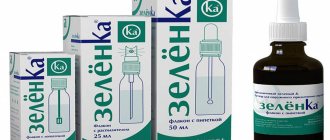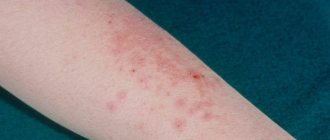Indications for use
- for antiseptic treatment of burns and wounds;
- treatment of bedsores and trophic ulcers ;
- treatment of sutures after operations;
- treatment of mouth and throat infections;
- prevention, treatment of genital infections ;
- preparation of mucous membranes and skin for surgical intervention (in obstetrics and gynecology, pediatrics, surgery, otorhinolaryngology, proctology, dentistry, etc.);
- for the prevention of mycoses of the interdigital spaces and feet.
Exposure time
| Microorganisms | Exposition |
| Bacteria - incl. wound microbes MRSA, Escherichia coli, Pseudomonas aeruginosa - including chlamydia, mycoplasma, ureaplasmosis, Gardnerella vaginalis and gonococci | 30 sec |
| Mushrooms (Candida albicans) | 2 minutes |
| Malassezia furfur | 1 min |
| Protozoa (Trichomonas) | 1 min |
| Viruses Herpes, hepatitis B and C, HIV | 30 sec |
| Application area | Exposition |
| Gynecology, proctology | 1 min |
| Before bladder catheterization | 1 min |
| Skin antiseptic before excision | 2 minutes |
| Oral cavity - tampon method - rinsing | 2 min 1 min |
| Wounds | 1 min |
| Whole Body Washing for MRSA | 50% solution 2 min |
Instructions for use of Octenisept (Method and dosage)
Before applying the drug, it is necessary to clean the area of skin or wound from dirt, pus or other biological substances.
The mucous membranes are treated in two or three steps using a tampon and applied to the skin by spraying. If it is necessary to apply other drugs after treatment with Octenisept, leave for 1-2 minutes.
To treat infections of the oropharynx, use Octenisept throat spray: the instructions recommend a dose of 20 ml per dose. If necessary, repeat irrigation after 20 seconds. Mouth rinsing is carried out either with a pure solution or in a dilution of 1:1 or 1:5.
To prevent mycoses, the interdigital spaces are treated in the morning and evening.
Directions for use
- When washing wounds, make sure that the drug easily gets onto the wound without effort.
- When washing deep wounds, ensure that there is always drainage.
- Do not use Octenisept® for washing the abdominal cavity (for example, during surgery), bladder, or on the eardrum.
- Do not swallow. Do not allow large amounts of Octenisept® to enter the bloodstream (for example, accidental exposure during injections)
- Do not mix Octenisept® with other drugs
- Do not use Octenisept® with PVP-iodine antibiotics on adjacent skin surfaces, as this may cause severe changes in skin color from brown to purple.
- Dressings can only be applied after Octenisept® has completely dried
- During use of the drug, a burning sensation may rarely occur, which quickly passes
- Octenisept® can be heated to body temperature
Analogues of Octenisept
Level 4 ATC code matches: Naftalan oil
Suporon
Naftaderm
Vinylin
Hydrogen peroxide
Potassium permangantsovka
Iodoform
Pantocide
Diamond green
Ectericide
Salicylic-zinc paste
Elekasol
Salicylic-Zinc ointment
Formalin
Formagel
Aseptolin
Xeroform
Vitaon
Olazol
Formidron
The drug has no structural analogues, as it contains a unique composition.
Analogues in the pharmacological group include: Octenidol , Protargol , Hexicon , Hexoral , Fukortsin , Miramistin , Chlorhexidine .
Reviews about Octenisept
All available reviews about Octenisept are positive. It is widely used by doctors in their practice and recommended for home use. The medicine is effective for the treatment of diseases of the oral cavity; for sore throats, after just a few rinses there is a significant improvement in the condition. Good reviews about the treatment of vaginal infections , especially in pregnant women.
This drug has even found application in cosmetology - some girls use it to wipe off acne. It is noted that the liquid is gentle on the skin without causing irritation or dryness.
Methods of application
The treated areas of the skin and mucous membranes must be evenly and thoroughly moistened with an antiseptic.
- Tampon method: under aseptic conditions, the treated surfaces of the skin and mucous membranes must be wiped with a swab moistened with the preparation. This method should be given preference when processing the mucosa, based on anatomical and psychological reasons.
- Spraying method: in individual cases and at the discretion of the physician, Octenisept® can be applied by spraying to easily accessible areas of the skin and mucous membranes. Ensure uniform spraying of the drug.
- Rinsing: Octenisept® can be used as a mouth rinse in gynecology.
Octenisept price, where to buy
You can buy Octenisept in Russian pharmacies for a price starting from 259 rubles. per bottle 50 ml. up to 1125 rub. per pack of 1 liter. In Moscow 250 ml. a bottle costs 404 rubles.
The price of Octenisept in Ukraine is on average 110 UAH. for 50 ml. and 154 UAH. per pack 250 ml.
- Online pharmacies in RussiaRussia
- Online pharmacies in UkraineUkraine
- Online pharmacies in KazakhstanKazakhstan
ZdravCity
- Octenisept solution for topical application.
and external approx. 250mlSchulke & Mayr GmbH RUR 905 order - Octenisept solution for topical application. and external approx. spray 50mlSchulke & Mayr GmbH
550 rub. order
- Octenisept solution for topical application. and external approx. 1lSchulke & Mayr GmbH
RUB 1,799 order
Pharmacy Dialogue
- Octenisept solution (spray 50ml)Schulke&Mayr
RUR 594 order
- Octenisept spray (250 ml bottle)Schulke&Mayr
RUR 988 order
- Octenisept solution (250ml)Schulke&Mayr
962 rub. order
- Octenisept solution (1l)Schulke&Mayr
RUB 2,075 order
show more
Pharmacy24
- Octenisept 250 ml solution Schulke and Mayr GmbH, Germany
400 UAH. order - Octenisept 50 ml solution Schulke and Mayr GmbH, Germany
261 UAH. order
- Octenisept 1 l solution Schulke and Mayr GmbH, Germany
801 UAH order
PaniPharmacy
- Octenisept liquid Octenisept solution 1l Germany, Schulke & Mayr
969 UAH. order
- Octenisept liquid Octenisept 0.05l Germany, Schulke & Mayr
320 UAH. order
- Octenisept liquid Octenisept 0.25l Germany, Schulke & Mayr
508 UAH order
show more
OCTENISEPT (instructions)
PHARMACOLOGICAL PROPERTIES: Pharmacodynamics . The drug has a wide spectrum of antimicrobial action due to the hydrophobic interaction of octenidine dihydrochloride with the cytoplasmic membranes of pathogenic microorganisms and is synergistically enhanced by the action of phenoxyethanol. The spectrum of antimicrobial action covers spore-forming and asporogenic microflora, gram-positive and gram-negative bacteria (aerobic and anaerobic), fungi, viruses, including mycobacterium tuberculosis, streptococci, staphylococci, multidrug-resistant Staphylococcus aureus (MRSA), enterococci, gonococci, meningococci, pneumococci, Escherichia, shigella, Proteus, Pseudomonas aeruginosa, Corynebacterium diphtheria, Gardnerella, ascomycetes, dermatophytes, candida, herpes viruses, hepatitis B, C, D, HIV, chlamydia, mycoplasma, ureaplasma, trichomonas, other microbial flora resistant to chemotherapy drugs. The drug has no toxic effect and is not absorbed through the mucous membrane, skin and wound surfaces. The microcidal activity of the drug appears 30 s after application and has a prolonged effect. Destroys microorganisms without damaging tissue cells. The use of the drug promotes the healing of wounds and burns due to its immunomodulatory effect. Pharmacokinetics . Octenidine dihydrochloride is not absorbed through the skin and mucous membranes. Phenoxyethanol is absorbed in small quantities and excreted by the kidneys in the form of phenoxyacetylic acid.
INDICATIONS: antiseptic treatment of the mucous membrane and adjacent tissues, skin; treatment of wound surfaces (including umbilical wounds of newborns, purulent wounds in surgical and obstetric practice); bedsores, ulcers (including gangrenous); treatment of the surgical field before, during and after surgical, diagnostic and other manipulations; for injuries (including fractures), burns (deep and superficial); treatment of abrasions, cracks (for example, nipples during breastfeeding), postoperative sutures; treatment and prevention of inflammation of the genital organs, urinary tract (including sexually transmitted diseases); prevention and treatment of infections of the oral cavity, nasopharynx, eyes; antiseptic lavage of cavities (including the maxillary, frontal paranasal sinuses, abdominal cavity, bladder); washing the body of patients with multidrug-resistant Staphylococcus aureus. Hygienic and surgical treatment of personnel’s hands; prevention of nosocomial and professional infection with HIV and hepatitis when contagious material gets on the mucous membranes (including the eyes) and skin.
APPLICATION: before using the drug, it is recommended to clean the areas of skin and mucous membranes to be treated. The antiseptic is evenly applied to the skin and mucous membrane, to the wound surfaces - using a swab soaked in a sufficient amount of solution, or irrigated using a sprayer. The surface must be completely wet. After treatment, before applying bandages and stickers, you must wait for the treated surface to dry. When treating the body before aseptic surgical interventions, the incision site should first be treated, and then the surrounding areas of the skin. During a septic operation, treatment begins from the periphery. Antiseptic treatment of the surgical field should be carried out at least twice. For the treatment of wounds (including the umbilical wound of newborns), burns, and bedsores, Octenisept is used undiluted. The treatment is carried out using a tampon soaked in the solution, irrigation from a spray bottle or applying gauze bandages soaked in Octenisept. For the purpose of prevention and local treatment of inflammatory processes, for rinsing the mouth and nasopharynx, Octenisept should be diluted with distilled (boiled) water in a ratio of 1:3, rinsing is repeated after 20 minutes. For washing cavities (including the frontal and maxillary sinuses), nasal passages; for stomatitis, inflammation of the mucous membrane of the eyes, for the sanitation of carriers of diphtheria and staphylococci, the drug is diluted with distilled (boiled) water in a ratio of 1:6. For patients with diphtheria, the drug is recommended to be used by spraying. To wash the genitals in order to prevent inflammatory processes (including infections of various origins), Octenisept is diluted with distilled (boiled) water or physiological solution in a ratio of 1:6. In complex treatment of inflammatory processes (including infectious diseases) of the genital organs, the drug is used undiluted or, if necessary, diluted with distilled (boiled) water or physiological solution in a ratio of 1:2; 1:3. For acute and chronic urethritis, urethroprostatitis, the solution is injected into the urinary canal in a volume of 2–5 ml, the procedure is repeated 2–3 times a day. In order to prevent sexually transmitted diseases, it is recommended to use Octenisept after sexual intercourse. When using the drug to wash the body of patients with multidrug-resistant Staphylococcus aureus, the solution is diluted in a ratio of 1:2; 1:6 (before use, the solution can be warmed to body temperature). For prevention (for example, in athletes) and treatment of fungal diseases of the skin of the legs and feet, treatment of these areas with the drug is carried out 2 times a day (morning and evening) by spraying. The treated area of skin should be dry. The frequency of use of Octenisept is 2-3 times a day, if necessary - up to 6 times a day. Do not use in the area of the eardrum.
CONTRAINDICATIONS: hypersensitivity to the drug.
SIDE EFFECTS: possible short-term slight burning at the site of application; when rinsing the mouth - a bitter taste.
SPECIAL INSTRUCTIONS: When used in the oral cavity, do not swallow. If a significant amount of the drug accidentally enters the stomach, it should be rinsed with a sufficient amount of water and activated charcoal should be taken. If the drug concentrate accidentally gets into your eyes, they should be rinsed with running water. The use of the drug in the area of the eardrum is not allowed. During pregnancy and breastfeeding . During pregnancy, the drug can be used without restrictions. When used during breastfeeding to treat cracked nipples, avoid getting the drug into the baby’s gastrointestinal tract.
INTERACTIONS: simultaneous use with iodine-containing antiseptics is not recommended.
OVERDOSE: not noted.
STORAGE CONDITIONS: in a dry place, protected from light at temperatures from –5 °C to 25 °C. After opening the bottle, the antiseptic is stored for 3 years.



